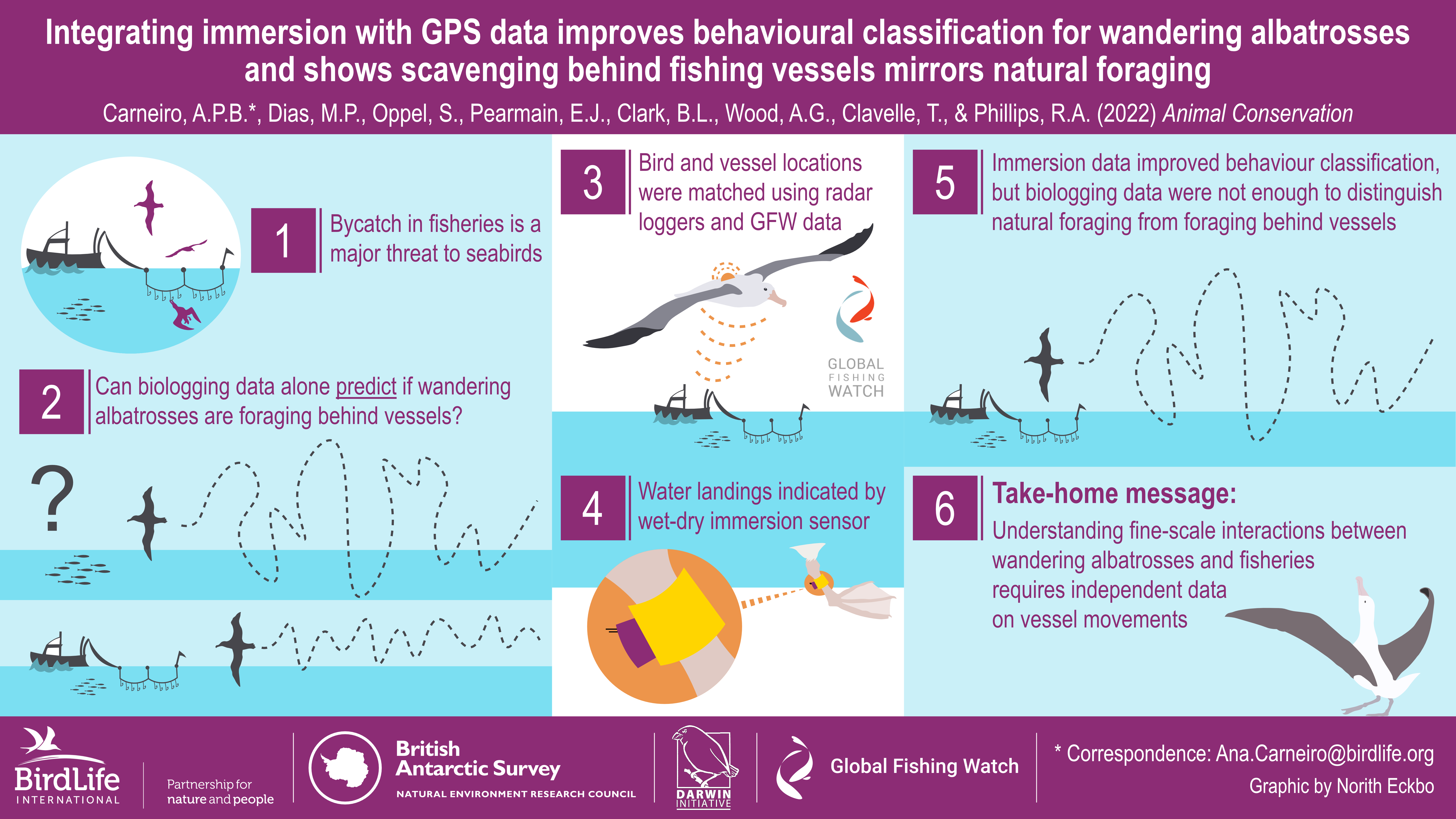
Ana Carneiro (BirdLife International, Cambridge, UK.) and colleagues have published open access in the journal Animal Conservation on studying Wandering Albatross Diomedea exulans - fishing vessel interactions with immersion loggers.
The paper’s abstract follows:
“Advances in biologging techniques and the availability of high-resolution fisheries data have improved our ability to understand the interactions between seabirds and fisheries and to evaluate mortality risk due to bycatch. However, it remains unclear whether movement patterns and behaviour differ between birds foraging naturally or scavenging behind vessels and whether this could be diagnostic of fisheries interactions. We deployed novel loggers that record the GPS position of birds at sea and scan the surroundings to detect radar transmissions from vessels and immersion (activity) loggers on wandering albatrosses Diomedea exulans from South Georgia. We matched these data to remotely sensed fishing vessel positions and used a combination of hidden Markov and random forest models to investigate whether it was possible to detect a characteristic signature from the seabird tracking and activity data that would indicate fine-scale vessel overlap and interactions. Including immersion data in our hidden Markov models allowed two distinct foraging behaviours to be identified, both indicative of Area Restricted Search (ARS) but with or without landing behaviour (likely prey capture attempts) that would not be detectable with location data alone. Birds approached vessels during all behavioural states, and there was no clear pattern associated with this type of scavenging behaviour. The random forest models had very low sensitivity, partly because foraging events at vessels occurred very rarely, and did not contain any diagnostic movement or activity pattern that was distinct from natural behaviours away from vessels. Thus, we were unable to predict accurately whether foraging bouts occurred in the vicinity of a fishing vessel, or naturally, based on behaviour alone. Our method provides a coherent and generalizable framework to segment trips using auxiliary biologging (immersion) data and to refine the classification of foraging strategies of seabirds. These results nevertheless underline the value of using radar detectors that detect vessel proximity or remotely sensed vessel locations for a better understanding of seabird–fishery interactions.”
With thanks to Richard Phillips.
Reference:
Carneiro, A.P.B., Dias, M.P., Oppel, S., Pearmain, E.J., Clark, B.L., Wood, A.G., Clavelle, T. & Phillips, R.A. 2022. Integrating immersion with GPS data improves behavioural classification for wandering albatrosses and shows scavenging behind fishing vessels mirrors natural foraging. Animal Conservation doi.org/10.1111/acv.12768.
John Cooper, ACAP Information Officer, 22 February 2022

 Français
Français  English
English  Español
Español